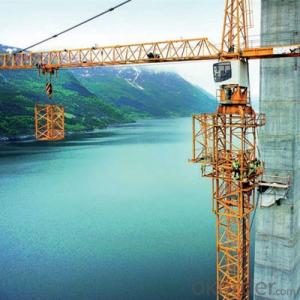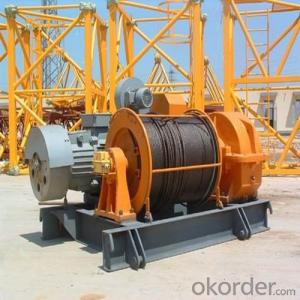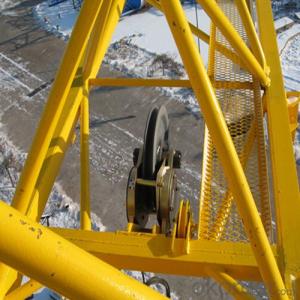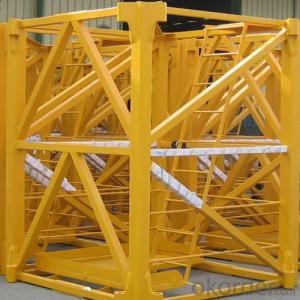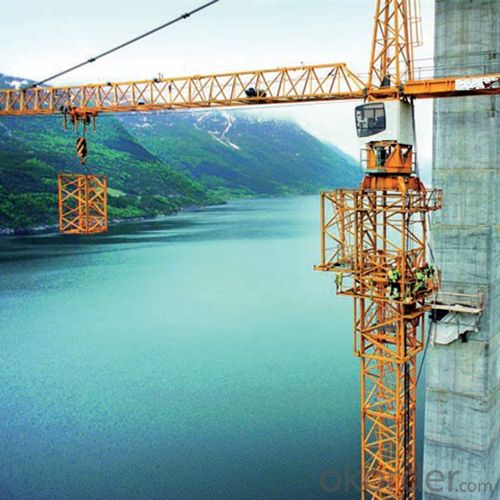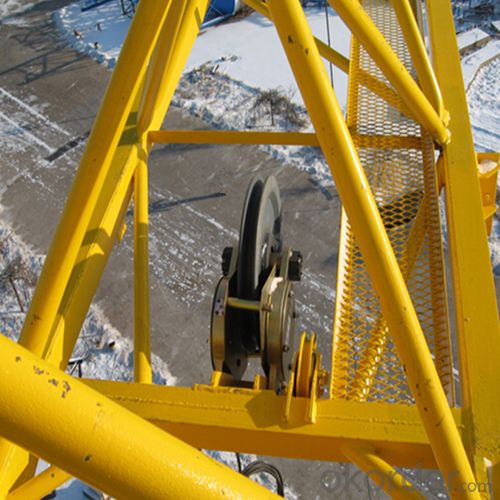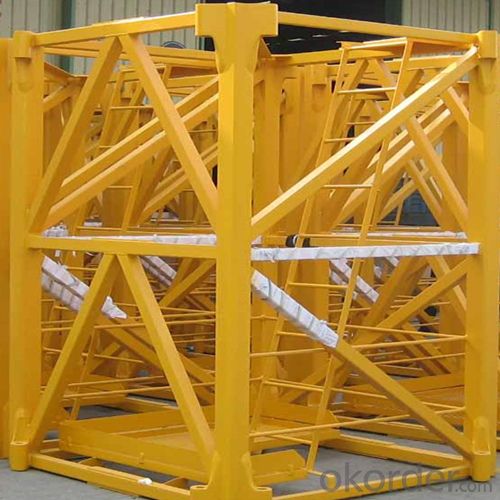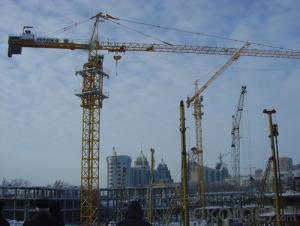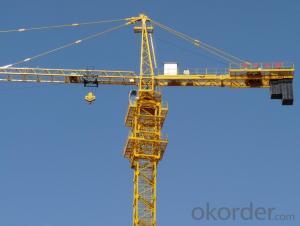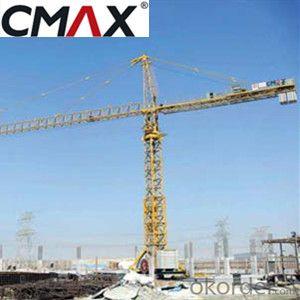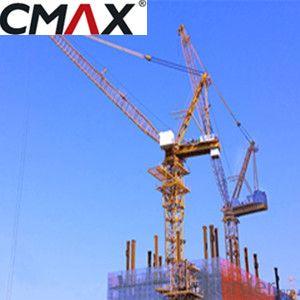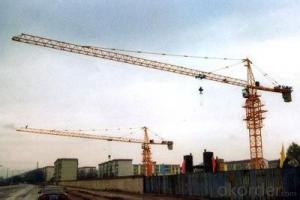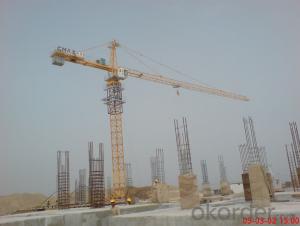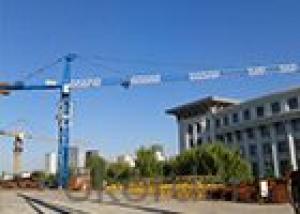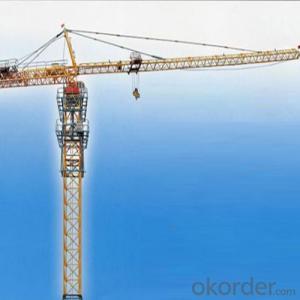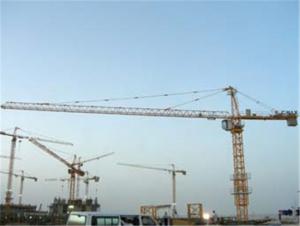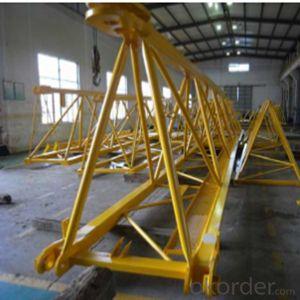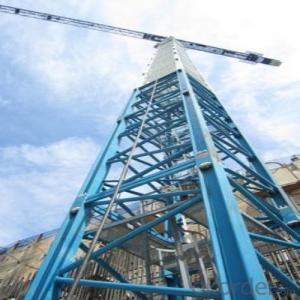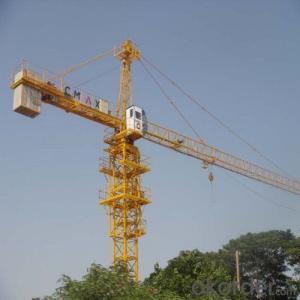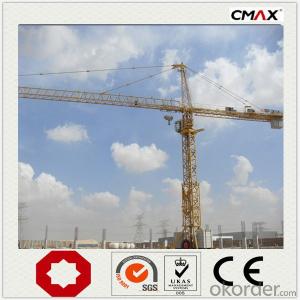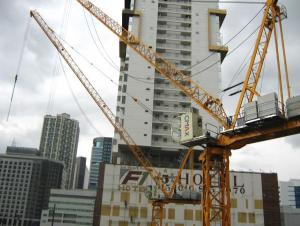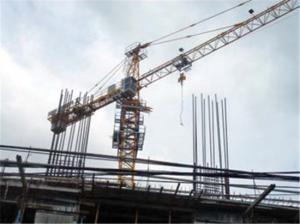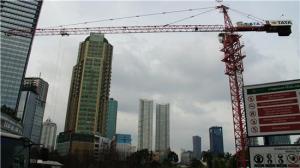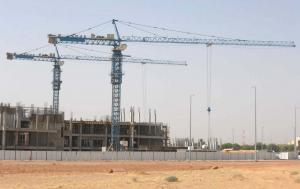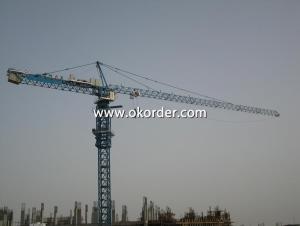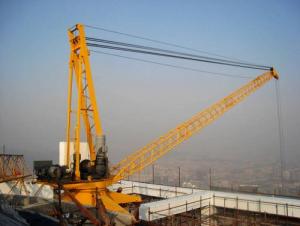Tower Crane Factory TC6024 Malaysia Market
- Loading Port:
- China main port
- Payment Terms:
- TT OR LC
- Min Order Qty:
- 1 unit
- Supply Capability:
- 30 unit/month
OKorder Service Pledge
OKorder Financial Service
You Might Also Like
Structure of Tower Crane Description
Feature: Tower Crane Condition: New Application: Construction Max.Lifting Load: 10T Max Tip Load:2.4T Independent Height:50.5M
Max Lifting Height: 200M Span: 60m Certification: CE,ISO
Place of Origin: China(Mainland) Model Number: TC6024
Packaging & Delivery of Tower Crane
Packaging Detail: Nude package Delivery Detail: 25-30days
Main Feature of Tower Crane
● Max. working range 60m, tip lifting weight 2.4T and Max. lifting weight 10T.
● Slewing mechanism and trolleying mechanism equipped with VFD technical control, stable and reliable,can provide stepless speed regulation.
● Outstanding in working efficiency, operating speed and stability. Reduce future maintenance cost.
Tower Crane Specifiction
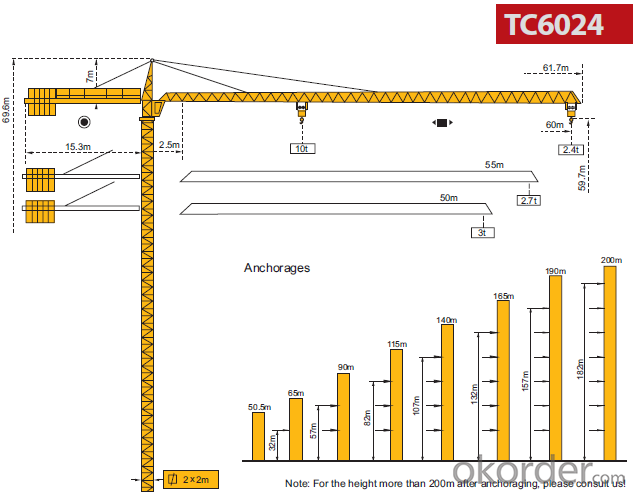
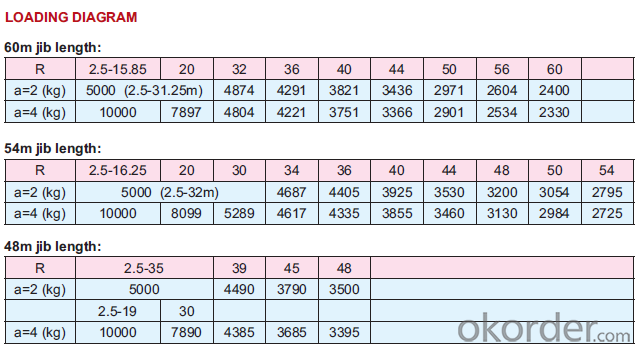
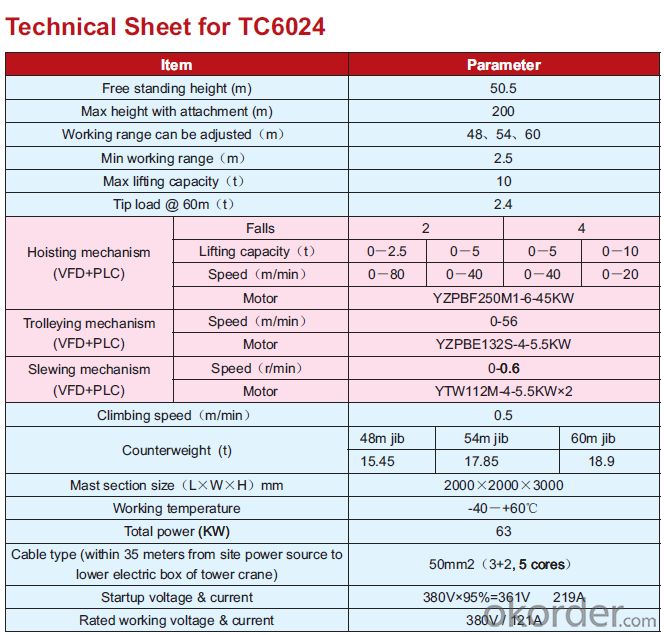
FAQ of Tower Crane
Q: What kinds of tower crane are available now?
A: Four main categories: normal tower crane with cat head, internal climbing tower crane, top less tower crane and luffing tower crane.
Q: What kind of steel used for tower crane?
A: Normally, as for the main force bearing steel structure, Q345B is adopted; as for the assistance force bearing steel structure Q235B is adopted. All of the raw material is outsourced from qualified steel factory in China.
Q: Your tower crane is similar to Potain or Liebherr type?
A: We could develop any type of tower crane as per clients’ requirements if the clear information is provided. Originally, our tower crane design is based on Liebherr; but now, we not only introduced Potain design; but also developed special tower crane according to the market needs such as TC5013A with panel mast section. In addition, we also produce some models same as Potain original model, such as F0/23B, H3/36B and etc.
- Q: I understand the Crane stances and know there are more than one. I am referring to the single leg crane stance. I also know that stances are only used briefly. But I am curious, does this stance have any bunkai applications? Or is it only useful against dodging a kick or preparing to kick?
- Great question. This is one of those stances that I believe can be more static in nature. I think this stance, as Kokoro points out, is a great example of a lying-on-the-floor technique without actually having to lie on the floor. There are 3 kinds of crane stances, that I'me aware of: 1) the left foot is placed behind the right knee and the left foot's shin is perpendicular to the floor 2) the left foot is placed next to right knee and the left foot's shin is perpendicular to the floor 3) the left foot is placed next to right knee and the left foot's shin is ANGLED (sticks out to the left) to the floor in method 1), the application can represent a bind, hook, or pull toward you, of opponet's knee/shin while standing or lying down. in method 2), the there are a couple of applications: 2a) it is a on-the-floor position where you are mounted; your knee up represents keeping the distance open between you and opponent. 2b) it is a chamber of sorts to a jumping front snap kick (some call this a crane kick, which was a question that was asked about this a day or two ago) - and Shadam mentions this again in this question 2c) it is a check or block of a kick or weapon, as Liondancer mentions. in method 3), the application represents that your opponent is kicked to the inside of the knee: either to disable or to sweep.
- Q: I found part of her story online, but can't find anything as to what happened to the 1000+ paper cranes she made before she died. Were they given to family members or given to a museum? Or have they been destroyed by time? I would feel terrible if all her work was destroyed by time or worse. :-(Thank you so much for answering.Peace.
- Her parents buried most of the cranes with her. They also gave the cranes to some of her close friends and relatives.
- Q: I have always wondered how they get cranes off the top of huge buildings when they finish building them.I have had many people tell me how they THINK the cranes are taken off. But I want to know for sure. Can anyone give me some evidence? A web site or something??When I say big building I mean like 100 storeys.I have been told things ranging from a helicopter takes them offToThey build tracks down the side of the building and drive it downAndThey pull it to pieces and take it down the elevator.These MAY be real but sound like wild guesses to me.So does anyone know the answer?
- but never have I seen a set of tracks or elevator used...not to say that it isn't possible but I have only worked big buildings in NYC...maybe things are done differently elsewhere in the world
- Q: Yea i need to write up a summary on that short story, but SERIOUSLY dont have time to read it because i have to study ever sentence to understand things lol.
- amazed that I found this topic already answered! It is like you read my thoughts!
- Q: how long do i have to work as a yardhand in oilfeild to become a crane operator?
- You need to get licensed or certified to operate the crane. make sure you are qualified before you start complaining about not getting more challenging work. The world needs ditch diggers to so get back to work.
- Q: Is there a certain direction and reason a construction worker will leave a crane facing a certain direction.
- They would generally try to point the boom (the longer part of the crane) away from the prevailing winds. This reduces stress on the tower - but it's not really a big deal.
- Q: Form the movie Dreamer, daughter of Ben Crane
- Connor. Caleb. Caden. Caelin. Cedric. Craig. Carson. Christian. Christopher. Callan. Chris. Casey. Chandler. Colton. Collin. Cain. Calvin. Campbell. Chesney. Chad. Chase. Chance. Channing. Chaz. Cieran. Columbus. Cody. Colbie. Cole. Clyde.
- Q: i have 5 tower cranes outside my window at different construction sites and they all position their cranes the same direction at the end of the day. is there a reason for this.
- I can think of a few reasons. The first 2 are safety related, the 3rd is work-efficiency related. 1. To minimize wind loading for the expected wind-direction overnight. 2. To minimize damage to the surrounding area should a failure happen and a crane fall (similar to felling a tree in a forest so it falls in the direction the lumberjack wants it to fall). 3. To leave the boom over the worksite for the next morning's first pickup (so, it would be a coincidence that all the pickup sites were at the same angle relative to the booms). .
- Q: I'm not sure how to set this problem up. Any help would be greatly appreciated. Thank you :)
- We start using by defining mechanical Power: = P=Work/time What is the work here? We lift the box a given distance. Work=mgh Since we know the power of the crane, we can simply plug in the values and solve for t: t=mgh/P This is only true if the crane has a constant power, which seems to be the case LeSmartOne
Send your message to us
Tower Crane Factory TC6024 Malaysia Market
- Loading Port:
- China main port
- Payment Terms:
- TT OR LC
- Min Order Qty:
- 1 unit
- Supply Capability:
- 30 unit/month
OKorder Service Pledge
OKorder Financial Service
Similar products
Hot products
Hot Searches
Related keywords
